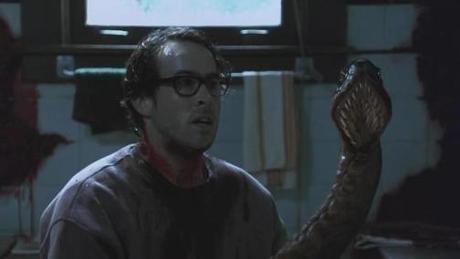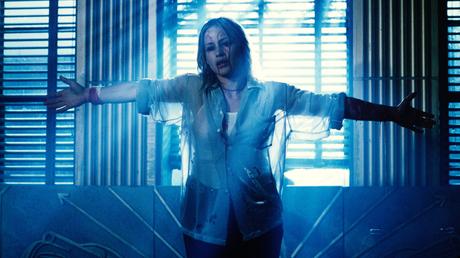That Time a Director Couldn't Choose an Ending...So He Didn't
Over the past 20 years we've seen online communication and digital technology arrive in households, seep into our routine and begin replacing things. Sometime's they're big and obvious, like streaming services replacing the rental market, but there are a few small restrictions we've totally forgotten about.
 Pictured: Early Modems
Pictured: Early Modems
Even before modern movies get released we have access to a plethora of materials online. Trailers, interviews, behind-the-scenes access, interacting with the stars via Twitter...there was a time when this wasn't the done thing. It wasn't that people didn't want it, or the studios didn't want to market the movie to it's full extent. Imagine this...when highly anticipated trailers were released, message boards will discuss which movie the trailer was attached to and people would go and buy a ticket to see the trailer. Sometimes, in the case of the Star Wars prequel trailers, just the trailer and then leaving.
Many people bought a ticket to the movie Dreamcatcher so they could watch an animated The Matrix short film and then leaving. This turned out to a smart move, as Dreamcatcher is batshit, drug fuelled Stephen King at the peak of his madness. It has evil butt monsters.

But even earlier than this, during the heyday of VHS, getting access to something as basic as deleted scenes or alternate endings was rare. Unless you caught a TV special your best bet was to read about them in a magazine. It wasn't until the DVD revolution that including bonuses such as these with the movie became the norm. Even Director Cuts were uncommon. On occasion we'd get an oddity like Clue, a delightful murder mystery comedy that shipped to cinemas with one of three endings. The VHS release included all three endings one after the other with a tongue-in-check 'this is what could have happened...' title card. That was fun, and for many the only version people knew.
That brings us to the year 1999 and a movie called Stigmata, directed by Rupert Wainwright. From time to time I've made notes on an article about movies from the 90s that have been forgotten (which is challenging because...I don't remember them), and this would be featured. Not because it's good. It's not. But it was intriguing and built up a fair amount of interest before completely tanking and slipping into the realm of obscurity.
The plot was a straight-forward theological thriller that ultimately read as a cheap The Exorcist rip-off. Patricia Arquette plays an atheist who comes into possession of a rosary that belonged to a priest who died of 'stigmata', and begins to suffer the same affliction. In short, the sufferer experiences the same wounds that Jesus Christ was dealt during crucifixion. Here, watch the trailer...
This is an unapologetically 90s trailer, and not just because the soundtrack boasts 'Billy Corgan, Afro-Celt Sound System feat. Sinéad O'Connor and Chumbawumba'. It's because the 90s were overflowing with edgy, pseudo-religious thrillers riding the tailcoats of Se7en. They mostly sucked. This movie also sucked and not for the reasons you'd expect from the trailer. It was boring.
Now to the strange aspect of the ending. There were two versions edited together, seemingly from the same footage. Throughout the movie it has been reenforced that if our lead character received the '5th stigmata wound' it would kill her, but only the most pious believer would receive this and it's never happened. In the rather weak conclusion of the film, Arquette collapses into the arms of co-star Gabriel Byrne and appears to be suffering the final wound. Then she stands up and walks away. The end.

It's a pointless and confusing ending, but the director preferred the alternative version. In this version Arquette collapses, Byrne watches he walk away...and then looks down to see her dead. It was her soul leaving, you see. This is an even more perplexing ending that leaves things frustratingly ambiguous about the real meaning of the movie.
We suspect that there was a disagreement between Wainwright and the studio when it came time to put out the home video release. Do we put the slightly more up-beat but confusing and pointless ending, or the grimmer also confusing ending? Do we kill the main character or not? It's a tough question, and not one that any creative type could be expected to answer. So they didn't.

When I, an ambitious university student working on a film degree, caught up on the movie I encountered the strange solution they came up with. And yes, I rented it from a Blockbuster video store. After a meandering 90 odd minutes the movie ended with Arquette dying. Then, a few moments later, the alternative ending played in a rough, unprocessed format. They stuck both endings onto this damn movie and played it off like it was normal.
This cheapens the experience of the movie. It makes the creators look indecisive and is the worst possible solution they could come up with. But more importantly, it annoyed me so much that I came back 20 years later and wrote a pointless article about it.
And here we are.

